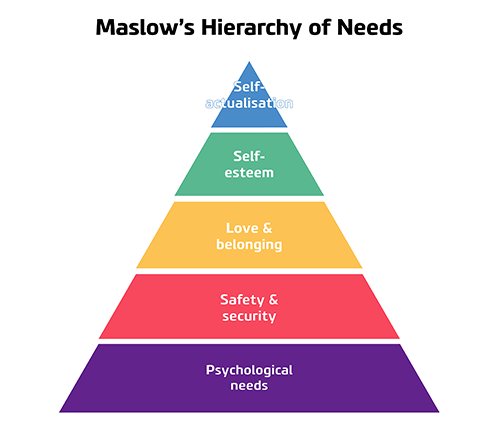In the context of his interview with #ZigZagHR magazine, HR Director Jan Dillis wrote a blogpost on Employee Experience. He explains the subject and draws a comparison to Maslow’s Hierarchy of Needs.
Employee Experience is a hot topic. You can consider it as a methodology that starts from the perspective that employees go on a journey and based on these journeys formulates solutions that help the employee wherever necessary. Fulfilling these needs on the moment they manifest themselves with the ultimate goal of creating positive experiences. This leads to a higher employee involvement. In the ‘war for talent’, Employee Experience can have, for instance, a positive impact on recruitment, retention, the wellbeing of employees and can facilitate employer branding.
An interesting approach in this context is to look at Employee Experience from the perspective of Maslow’s Hierarchy of needs.

First of all, the model illustrates a hierarchy of priorities for initiatives that are to be taken in the context of Employee Experience. It doesn’t make sense to pay a lot of attention to actions on a higher level in the hierarchy when the lower levels aren’t properly fulfilled. What is the purpose of a great offer of learning and development opportunities in an office with hardly any daylight and filthy, dysfunctional toilets? To put it in other words: you cannot forget the ‘basics’. When these are properly sorted out, you’re already halfway there.
At the same time, the model shows that when you have a lack of initiatives on the higher levels, it’s unwise to overcompensate with actions on the lower levels. A super trendy office space with all kinds of extra facilities like a gym and childcare doesn’t compensate for a lack of learning and development opportunities.
Finally, the model illustrates the ultimate goal: to support employees in their need to develop themselves as much as possible and to reach their full potential, a.k.a. self-actualisation. This goes beyond the responsibility of companies to keep up the ‘employability’ of its employees. It’s the logical next step of giving employees the ability to form and shape their individual goals and career development. Having control over your own destination is perhaps the most obvious way to self-actualisation, and whereby the organisation lets its employees follow their intrinsic motivations to the extent possible.
A final footnote: we don’t need to expect, or even demand, that everyone will follow this path within the organisation. Employees with a ‘job mindset’, ‘career mindset’, ‘growth mindset’ and ‘purpose mindset’ can perfectly work together in a constructive and efficient way. A ‘job mindset’ means that someone carries out transactional tasks in exchange for a reimbursement and doesn’t expect much else. Someone with a ‘career mindset’ is mostly focussed on building a career, for example having more responsibility, increasing the span of control and a nicer title. Employees with a ‘growth mindset’ want to broaden their knowledge and develop new skills in order to apply them in the organisation. Finally, someone with a ‘purpose mindset’ wants to contribute in a passionate and dedicated manner to a common, useful goal which benefits all parties concerned.
It is clear that Employee Experience often needs a different realisation or approach for each of these ‘mindsets’.
